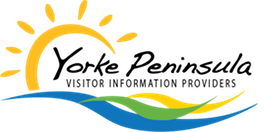The islands of the Yorke Peninsula are an intrinsic part of the Dreaming for the Nharangga people.
Althorpe Islands, Goose Island and Troubridge Island Conservation Parks are located south, west and east of Yorke Peninsula, respectively. These parks comprise one or more islands, with the proclamations of the parks occurring over many years. All parks are proclaimed to low water mark and are without access under State mining legislation.
General visitor use at these islands is relatively low and access is mostly by boat. Althorpe Islands Conservation Park is the most difficult to reach, being farther from the coast and often through rough seas. The most regular visitors to the island are Department of Environment and Heritage (DEH) staff, volunteers and researchers. To protect important wildlife habitat, particularly for sea-bird populations, Althorpe Island, Haystack Island and Seal Island (extending to low water mark) in Althorpe Islands Conservation Park, and Troubridge Island (extending to low water mark) in Troubridge Island Conservation Park, were afforded Prohibited Area status under the National Parks and Wildlife Act 1972. Access to these islands is permitted under controlled conditions, currently implemented either through permission granted by DEH or, in the case of Troubridge Island Conservation Park, the commercial tourism operator that utilises the keepers' cottages as short-term holiday accommodation. The main island at Goose Island Conservation Park is leased by Scotch College; hence most visitors to the park are school students and staff.
Althorpe Islands Conservation Park (162.87 hectares)
Located in Investigator Strait, south of the 'toe' of Yorke Peninsula. The park was first proclaimed in 1967 as a fauna reserve and was constituted by statute as Althorpe Islands Conservation Park with the passage of the National Parks and Wildlife Act in 1972. Several additions have been made since then, the most recent being the main Althorpe Island in 1997. Today the park consists of three large islands (Althorpe, Haystack and Seal) that rise out of the sea with granitic cliffs and dramatic plateaus, and several islets and rocky reefs. Althorpe Island is the southernmost, highest (93 metres) and largest (96 hectares) island, and lies approximately 8.5 kilometres (4.5 nautical miles) south-west of Cape Spencer. Haystack and Seal Islands lie approximately 7 kilometres (3.8 nautical miles) north-east and 6.5 kilometres (3.5 nautical miles) east-north-east of Althorpe Island, respectively.
Goose Island Conservation Park (34.89 hectares)
Located in Spencer Gulf, south of the 'knee' of Yorke Peninsula, north-west of Port Victoria and north of the largest island in the vicinity, Wardang Island. The park was constituted by statute in 1972 to conserve an offshore breeding and refuge area for sea-birds and the Australian Sea-lion (Neophoca cinerea). Goose Island Conservation Park comprises a scattered group of 12 small, limestone islands that are thought to have once been part of a land bridge connecting Point Pearce peninsula to Wardang Island. The park's islands are generally low-lying and featureless, the most identifiable being:
- Goose Island, approximately 4.5 kilometres (2.4 nautical miles) west of Point Pearce;
- Little Goose Island, approximately 250 metres (0.13 nautical miles) north-north-east of Goose Island;
- White Rocks, an elongated band of rocky reef and large boulders 370 metres north-west of Goose Island;
- Island Point, approximately five kilometres (2.7 nautical miles) north-west of Goose Island;
- Rocky Island, approximately six kilometres (3.2 nautical miles) south-east of Goose Island; and
- three islets adjacent Goose Island called Seal Rocks.
Troubridge Island Conservation Park (259.90 hectares)
Located at the entrance to Gulf St Vincent in Investigator Strait, seven kilometres east (3.8 nautical miles) of the 'heel' of Yorke Peninsula, not far from Edithburgh. The park was proclaimed in 1982 to conserve sea-bird rookeries and to preserve heritage values of a lighthouse and associated keepers' cottages. In 1986 the park boundary was extended to encompass a relatively large intertidal area around the island. Troubridge Island (approximately two hectares at high tide) is essentially a vegetated shifting sand-spit that rises from the heart of a broad sandbank (Robinson et al., 1996). The island's profile has altered considerably over the years.
All three parks are relatively small and their environments substantially altered from their pre-settlement condition. However, they still provide specialised habitat for a range of coastal-adapted flora and fauna. The only native plant species of conservation significance recorded in the parks are the state vulnerable Australian Broomrape (Orobanche cernua var. australiana) at Goose Island Conservation Park, and state rare Scaly Poa (Poa fax) at Althorpe Islands Conservation Park. The islands provide important habitat for numerous bird species, including the state endangered Fairy Tern (Sterna nereis), Hooded Plover (Thinornis rubricollis), and White-bellied Sea-Eagle (Haliaeetus leucogaster), and the state rare Osprey (Pandion haliaetus), Peregrine Falcon (Falco peregrinus) and Rock Parrot (Neophema petrophila). The waters surrounding the islands are important feeding and breeding areas for the nationally and state vulnerable Australian Sea-lion, as well as the New Zealand Fur Seal (Arctocephalus forsteri).
Althorpe Islands and Troubridge Island Conservation Parks each contain a lighthouse and associated keepers' cottages, which have important links with South Australia's maritime history. Construction of the lighthouse on Althorpe Islands Conservation Park commenced in 1877, and was operated and maintained by lighthouse keepers following its completion in 1879 until 1991; it is now automated and is maintained by the Australian Maritime Safety Authority (AMSA). The lighthouse on Troubridge Island Conservation Park was constructed in 1856; it became redundant for shipping and navigation when its light was extinguished in 2002.
Department of Environment, Water and Natural Resources
Althorpe Islands, Goose Island and Troubridge Island Conservation Parks Management Plan 2009





